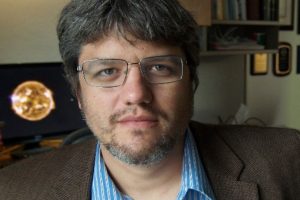
on Zoom: https://wse.zoom.us/j/96511521743?pwd=ZVN3VGVwaEt4NFIxNU1qWnp2UFNBUT09
Meeting ID: 965 1152 1743
Passcode: 288754
Abstract:
The emergence of competitive renewable energy from sunlight and wind heightens the importance of moving and storing energy from the place of origin to the locations where people live and work. Chemically capturing energy as compressed hydrogen or energy liquids including hydrocarbons and ammonia remains a leading method of energy storage based on density and fungibility, but the catalytic technology necessary for transformation of electricity into chemicals in small, distributed energy systems is the key challenge for implementation. In this work, we propose to utilize electronically tunable catalytic surfaces (catalytic field effect transistors) to promote the reactions of hydrogen production and hydrogen storage as ammonia. The general approach of programmable catalyst operation is described as oscillatory binding energy of adsorbates on active sites as a method to dramatically accelerate the rate of catalytic reaction. Surface oscillations in sinusoidal and square waveforms of transient binding energy are imposed on catalyst surfaces with varying amplitude and frequency to identify the resonance conditions leading to 10,000x enhancement in overall reaction rate. The results are presented in the context of catalyst-reaction behavior and with regard to implementation in industrial reactor technologies necessary for moving and storing renewable energy.
Bio:
Paul Dauenhauer received a bachelor of science in chemical engineering and chemistry from the University of Wisconsin – Madison in 2004, and a Ph.D. in chemical engineering from the University of Minnesota in 2008 supervised by Professor Lanny D. Schmidt. From 2008 to 2009, Paul worked as a senior research engineer for the Dow Chemical Company within Core R&D Reaction Engineering in Midland, MI and the Hydrocarbons & Energy Department in Freeport, TX. In 2009, he joined the University of Massachusetts, Amherst, Department of Chemical Engineering as an assistant professor. As of 2014, he is the Lanny & Charlotte Schmidt Professor and MacArthur Fellow at the University of Minnesota in the Department of Chemical Engineering and Materials Science. His work has been highlighted with the NSF CAREER award, the DOE Early Career Award, the Camille Dreyfus Teacher-Scholar award, and the AIChE CRE Young Investigator award. In 2020, he was selected as a MacArthur fellow. His published patent applications serve as the scientific foundation of five startup companies including Sironix Renewables, Lakril Technologies, Carba, Activated Research Company, and enVerde, LLC.
The John C. and Florence W. Holtz Lecture
Dr. Holtz started his government career in 1934 as a Junior Chemist in the Navy Department and transferred to the bureau of mines as Associate Gas Engineer on December 1, 1936. Because of his capabilities, Bureau assignments were varied with increasing responsibilities. Starting with research on gaseous products from explosives, he also organized, directed, and worked with other Bureau scientists conducting pioneering research on diesel exhaust products. This work led to the establishment of the present Bureau of Mines Schedules 22, 24 and 31 for diesel mine locomotives, mobile-diesel-powered equipment for non-coal mines, and mobile-diesel-powered equipment for gassy non-coal mines and tunnels.
Dr. Holtz’s publication of Bureau of Mines R.I. 5616, “Safety with Mobile-Diesel-Powered Equipment Underground” is used internationally as a basic reference for diesel performance and operational characteristics in mines and tunnels. His experience with explosives was utilized during World War II in the conduct of a variety of research projects on explosives and propellant systems. Following the war, he assumed additional administrative responsibilities at the Bureau of Mines installation in Grand Forks, North Dakota; Morgantown, West Virginia, and Pittsburgh, Pennsylvania.
For his eminent career in Bureau of Mines and his outstanding achievement in the field of safety with diesel-powered equipment, Dr. Holtz was granted the highest award of the Department of the Interior, its Distinguished Service Award, on June 8, 1967.